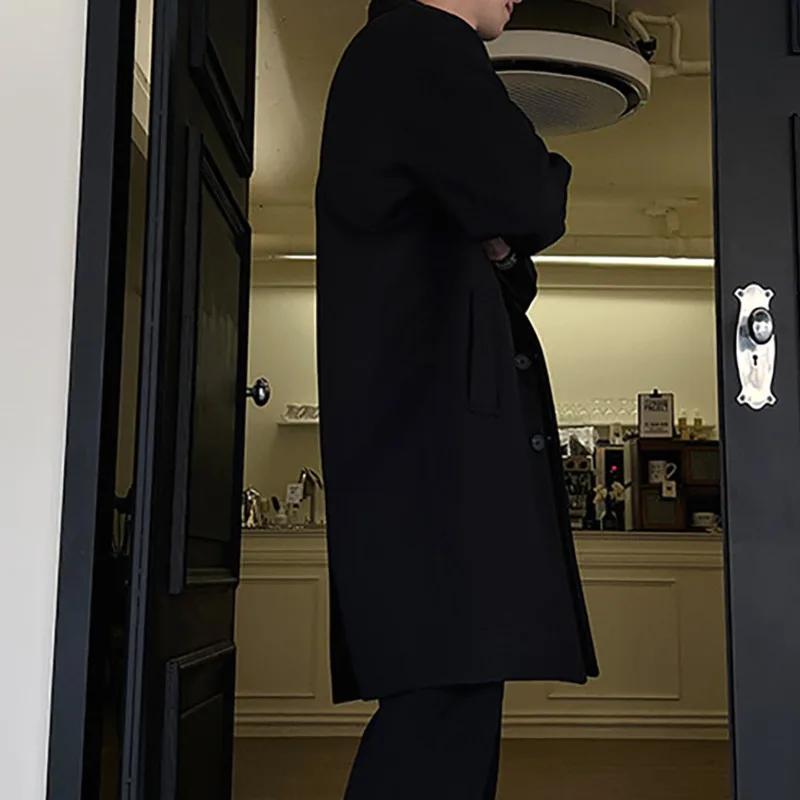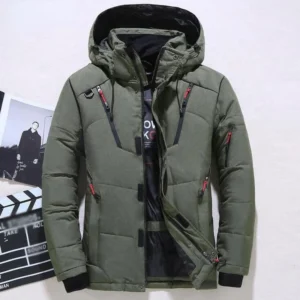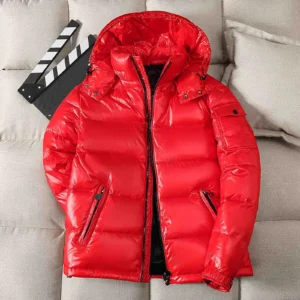Why Coat Length Matters for Winter Comfort and Style
When winter arrives, a coat becomes more than just an outer layer—it transforms into your daily armor against the elements. While many men focus on material and insulation when selecting winter outerwear, coat length plays an equally crucial role in both comfort and protection. The right length doesn’t just complement your appearance; it fundamentally affects how your body retains heat during cold weather.
Proper coat length creates a protective barrier that blocks cold air from circulating around your body while trapping your natural warmth. This balance between coverage and mobility determines not only how warm you’ll stay but also how comfortable you’ll feel during various winter activities. Your perfect coat length depends on finding that sweet spot between:
- Maximum cold protection for vital body areas
- Freedom of movement for daily activities
- Proportional styling that flatters your physique
- Practical considerations for your typical winter routine
Men who frequently transition between driving and walking, for example, face different requirements than those who primarily commute on foot. Choosing the right coat length becomes a critical decision that impacts both your winter comfort and personal style.
Understanding Men’s Coat Length Classifications
Before diving into specific recommendations, it’s important to understand the standard length classifications in men’s outerwear. These categories provide a common language for discussing coat lengths and help you identify which styles might best suit your needs.
Short/Cropped Length: These coats typically end at or above the hip bone, measuring approximately 20-26 inches (51-66 cm) in length. This category includes bomber jackets, short parkas, and cropped peacoats.
Mid-Length: Covering from the hip to just above the knee, these coats generally measure 27-35 inches (68-89 cm). Common styles include car coats, traditional pea coats, and many modern parkas.
Long/Full Length: These coats extend from the knee down to the ankle, measuring 36-48 inches (91-122 cm) or more. Classic overcoats, trench coats, and full-length parkas fall into this category.
Your height significantly impacts how these lengths appear on your body. A coat that hits at mid-thigh on a shorter man might only reach the upper thigh on someone taller. Understanding your proportions is essential when interpreting these men’s coat length guidelines for your specific physique.
Short Length Coats: Waist to Hip Options
Short coats provide exceptional mobility while still offering core warmth. These styles typically end at or just below the hip bone, making them ideal for active lifestyles or mild winter conditions.
Advantages of Short Length Coats:
– Maximum freedom of movement for active pursuits
– Easy to wear while driving without bunching
– Less restrictive for bending, climbing, or athletic activities
– Lightweight feel with focused core insulation
– Modern, youthful appearance that works well with casual attire
Potential Limitations:
– Limited lower-body protection in severe weather
– Less coverage during precipitation
– Reduced formal appearance for business settings
– May allow cold air entry at the waist during windy conditions
Short coats excel when your priority is mobility over maximum coverage. They’re perfect for mild winter climates where temperatures rarely dip below freezing or for active outdoor pursuits where unrestricted movement is essential. The differences between short and long coat designs become particularly noticeable during activities that require frequent bending or reaching.
Mid-Length Coats: Thigh to Upper Knee Coverage
Mid-length coats represent the versatility sweet spot in winter outerwear. Extending to the mid-thigh or just above the knee, these styles offer substantial weather protection while maintaining good mobility.
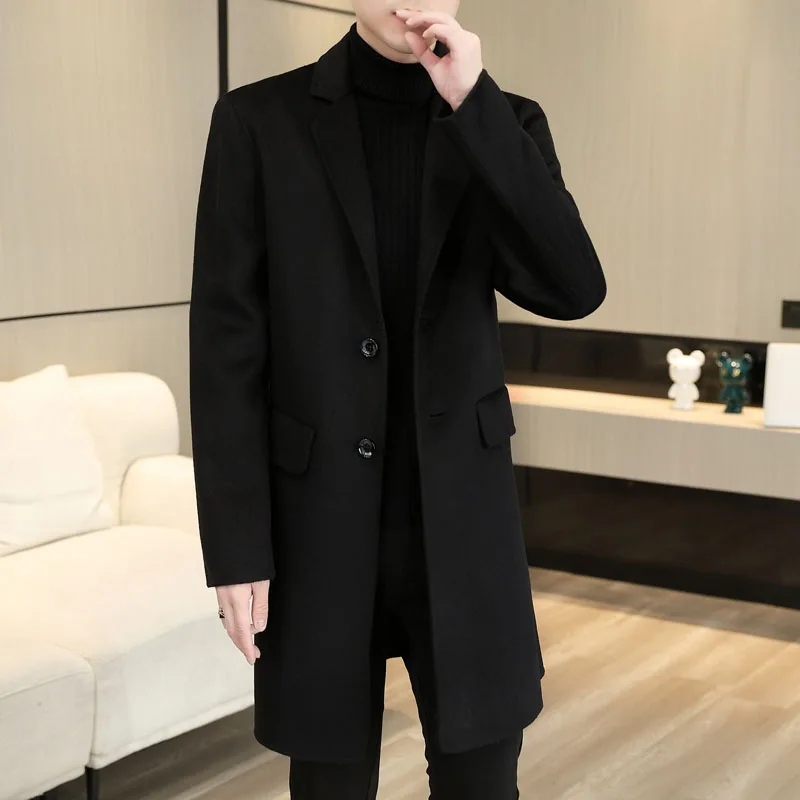
Advantages of Mid-Length Coats:
– Balanced protection for core and upper legs
– Practical for most daily winter activities
– Professional appearance suitable for business settings
– Effective wind blocking during average commuting
– Versatile styling that works with multiple outfit types
Potential Limitations:
– Moderate restriction when sitting for extended periods
– May require adjustment when entering/exiting vehicles
– Less ideal for extreme athletic activities
– Can appear bulky on shorter frames if not properly fitted
Mid-length options like car coats have earned their popularity through sheer versatility. They provide enough coverage for most urban winter conditions while maintaining a refined silhouette that transitions seamlessly between casual and semi-formal settings. This length excels for typical winter commuting, social outings, and daily activities in moderate winter climates.
Long Coats: Knee-Length to Ankle Coverage
Long coats deliver maximum protection against winter’s harshest conditions. Extending from the knee down to the ankle, these classic styles prioritize coverage and insulation above all else.
Advantages of Long Coats:
– Maximum body coverage during extreme cold
– Superior wind protection for extended outdoor exposure
– Classic, sophisticated appearance for formal occasions
– Enhanced warmth for stationary outdoor activities
– Impressive visual presence and dramatic silhouette
Potential Limitations:
– Reduced mobility for athletic activities
– Can be cumbersome in crowded spaces or while seated
– May be excessive for mild winter conditions
– Requires careful proportioning to avoid overwhelming shorter frames
Traditional long overcoats shine in urban environments where you’ll spend extended time outdoors in frigid conditions. They pair naturally with formal business attire and evening wear, creating a commanding presence while providing unmatched lower body protection. Long coats are particularly valuable in windy, cold climates where maintaining body heat during extended outdoor exposure is essential.
How Winter Severity Should Influence Your Coat Length Choice
The climate you face should significantly impact your coat length decision. Winter conditions vary dramatically by region, and your coat should be equipped to handle your specific environmental challenges.
| Winter Climate | Recommended Lengths | Key Considerations |
|---|---|---|
| Mild (40-55°F/4-13°C) | Short to mid-length | Focus on versatility and layering options |
| Moderate (25-40°F/-4-4°C) | Mid-length | Balance protection with everyday practicality |
| Severe (Below 25°F/-4°C) | Mid to long length | Prioritize maximum coverage and insulation |
In milder winter regions, the focus shifts from maximum insulation to adaptable layering and rain protection. Short to mid-length options typically provide adequate coverage while preventing overheating.
For moderate winter conditions, mid-length coats offer the versatility needed to handle fluctuating temperatures and occasional snow, especially when paired with proper layering underneath.
When facing truly severe winter environments with sub-zero temperatures, wind chill, and heavy snow, wool overcoats designed for maximum warmth in longer lengths provide crucial protection. In these conditions, the extended coverage of thighs and knees makes a significant difference in overall comfort and heat retention.
Your Lifestyle and Activities: Matching Length to Daily Needs
Your typical winter routine should heavily influence your coat length selection. Different activities place unique demands on your outerwear, making certain lengths more practical than others.
For the urban professional with a walking commute, mid to long-length coats provide necessary protection during extended outdoor exposure. The formal appearance of these longer styles also complements business attire naturally.
Active outdoor enthusiasts benefit from shorter lengths that don’t restrict movement during hiking, snow shoveling, or recreational activities. The mobility advantages of hip-length styles become particularly apparent during any activity requiring frequent bending or arm movements.
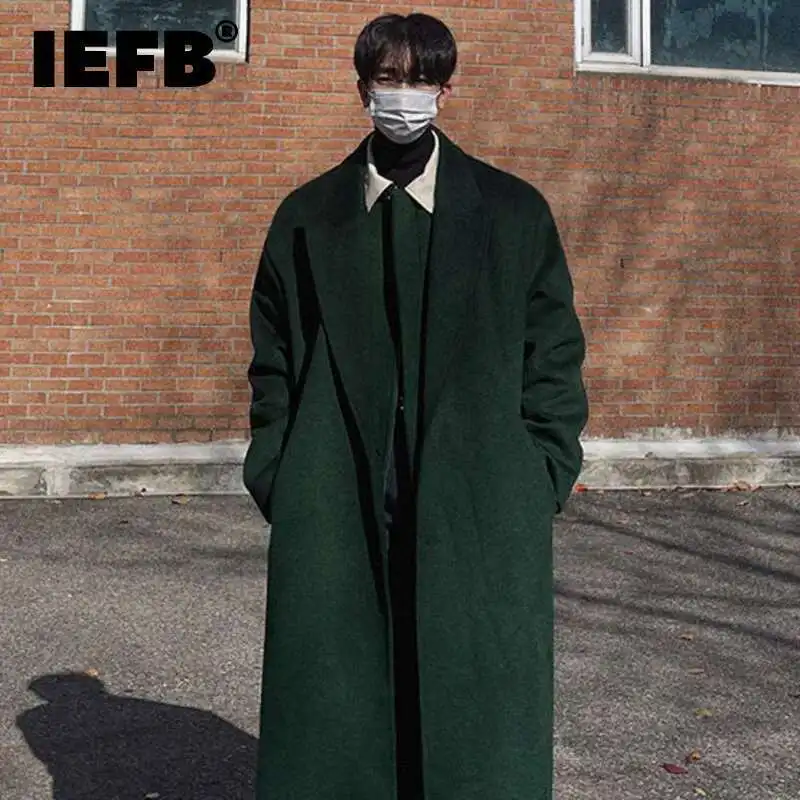
Drivers face unique considerations—long coats can bunch uncomfortably behind the wheel and make entering/exiting vehicles awkward. Short to mid-length options typically offer better driving comfort while still providing adequate warmth upon arrival.
Those who frequently transition between indoor and outdoor environments benefit from mid-length winter coats that balance protection with ease of movement. These versatile options prevent overheating when entering heated buildings while still offering substantial coverage during outdoor transitions.
Body Type Considerations: Finding Your Most Flattering Length
Your physical proportions play a crucial role in determining your ideal coat length. The right length not only enhances comfort but creates a visually balanced silhouette that complements your natural build.
For Men Under 5‘8” (173 cm):
– Short to mid-thigh lengths typically create the most balanced proportions
– Avoid extremely long coats that can overwhelm your frame
– Look for styles that end just above the knee at maximum
– Consider tapered silhouettes that follow your body’s natural line
For Men 5‘8” to 6‘0” (173-183 cm):
– Most coat lengths work well with balanced proportions
– Mid-length options offer the greatest versatility
– Long coats can create a dramatic look without overwhelming
– Consider how different lengths align with your personal style
For Men Over 6‘0” (183 cm):
– Mid to longer lengths complement taller frames naturally
– Short jackets may appear proportionally shorter than intended
– Look for brands that offer tall sizing for proper sleeve length
– Take advantage of the sophisticated appearance longer coats provide
Your build also influences ideal coat length. Men with broader chests or larger midsections often benefit from slightly longer coats that create a balanced silhouette. The relationship between height and perfect coat length helps create a harmonious overall appearance that flatters your natural proportions.
Essential Features That Complement Your Chosen Length
Once you’ve determined your ideal coat length, certain features can enhance functionality and comfort regardless of the length you select.
Closure Systems:
– Short coats benefit from secure zippers that prevent cold air entry at the waist
– Mid-length styles work well with both zippers and button systems
– Long coats traditionally feature button closures with storm flaps for extra protection
Hood Designs:
– Removable hoods offer versatility across different conditions
– Adjustable hood features are particularly valuable for short and mid-length active styles
– Hooded winter coat designs should include adequate adjustability to seal out wind
Cuff Styles:
– Extended inner cuffs provide crucial gap protection in shorter styles
– Adjustable cuffs prevent cold air entry regardless of length
– Storm cuffs in longer styles enhance overall weather resistance
Pocket Placement:
– Higher hand pockets in short coats maintain accessibility when wearing backpacks
– Side-entry pockets in mid-length styles offer natural hand positioning
– Interior security pockets become more valuable in longer formal styles
Mens Heavy Winter Coat, Mens Insulated Coat, Mens Parka Coat
Price range: $175.52 through $237.36 Select options This product has multiple variants. The options may be chosen on the product pageMens Big and Tall Winter Coats, Mens Down Coat, Mens Hooded Winter Coat, Mens Puffer Coat
Price range: $126.44 through $217.01 Select options This product has multiple variants. The options may be chosen on the product pageMens Big and Tall Winter Coats, Mens Hooded Winter Coat
Price range: $80.32 through $106.68 Select options This product has multiple variants. The options may be chosen on the product pageMens Cashmere Overcoat, Mens Hooded Winter Coat, Mens Wool Blend Coat
Price range: $128.72 through $139.68 Select options This product has multiple variants. The options may be chosen on the product pageMens Hooded Winter Coat, Mens Insulated Coat, Mens Puffer Coat, Mens Quilted Coat
Price range: $139.88 through $177.72 Select options This product has multiple variants. The options may be chosen on the product pageMens Black Overcoat, Mens Black Wool Coat, Mens Wool Overcoat
$339.18 Select options This product has multiple variants. The options may be chosen on the product page
Venting Options:
– Back vents in longer styles enhance movement during walking
– Underarm venting in short active coats prevents overheating
– Side vents in mid-length business styles improve sitting comfort
The right combination of these features complements your chosen length to create a truly functional winter coat that meets your specific needs.
The Fit Test: Ensuring Perfect Length and Proportions
Finding the perfect coat length involves more than just selecting a general category—proper fit ensures both comfort and visual appeal. Use these practical tests to confirm your coat length works for your body and lifestyle:
Shoulder Alignment Check:
1. The shoulder seams should sit at your natural shoulder edges
2. Raised arms shouldn’t pull the entire coat upward excessively
3. No significant collar gap should appear when standing normally
Movement Assessment:
1. Cross your arms across your chest—the coat shouldn’t severely restrict movement
2. Reach forward as if driving—shorter styles should remain comfortable
3. Walk briskly to ensure the coat doesn’t impede your natural stride
Layering Verification:
1. Try your coat with your typical winter layers underneath
2. Ensure you can comfortably button or zip it with layers
3. Check that sleeve length remains adequate with layered clothing
Sitting Test:
1. Mid and long coats should be evaluated while seated
2. Ensure the coat doesn’t bunch excessively at the waist when sitting
3. Check that longer styles can be comfortably adjusted when seated
Finding the perfect coat length for your body type often requires trying several options to identify which provides both the protection and comfort you need without restricting your daily activities.
How to Layer Effectively with Different Coat Lengths
Mastering the art of layering allows you to maximize the performance of any coat length throughout winter’s temperature fluctuations.
Layering with Short Coats:
– Focus on high-performance base and mid layers since coverage is limited
– Consider vests that extend below the coat hem for added core protection
– Utilize scarves to seal the neck area against cold air entry
– Choose thermal undergarments that provide lower-body warmth
Layering with Mid-Length Coats:
– Balance layer thickness to maintain mobility
– Lightweight but effective mid-layers prevent bulk while adding insulation
– Quarter-zip pullovers create adjustable warmth zones
– Technical fabrics help manage moisture during commuting
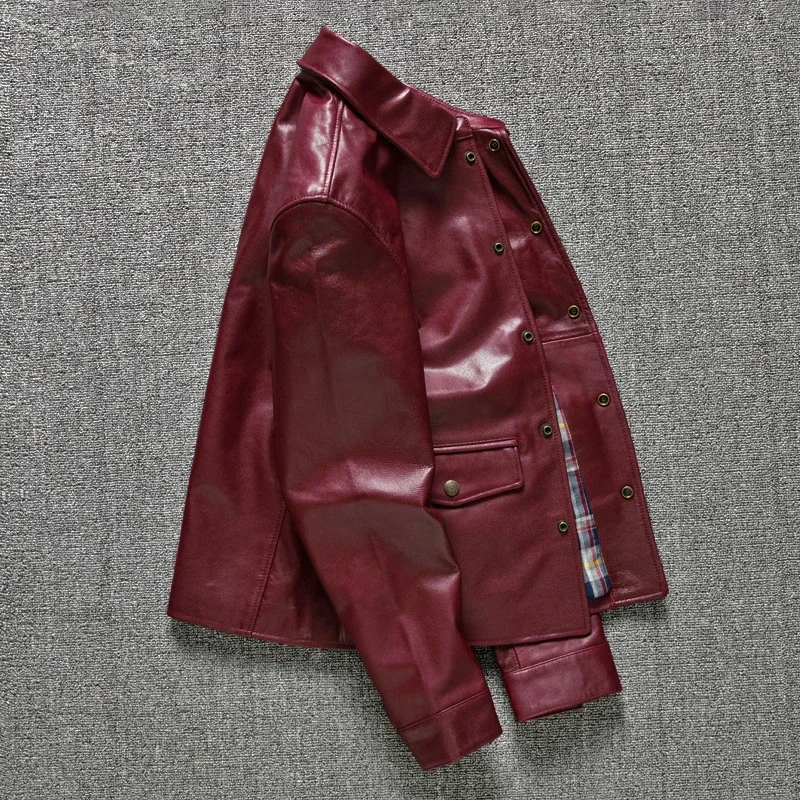
Layering with Long Coats:
– Lighter base layers often suffice due to extensive coverage
– Focus on breathable fabrics that prevent overheating
– Consider how layers affect the coat’s drape and appearance
– Long overcoats designed for winter layering should accommodate thinner insulating layers
The principle of adjustability becomes crucial regardless of coat length. Layering systems that allow you to adapt to changing conditions—removing or adding pieces as needed—extend the functional range of any coat length through fluctuating winter temperatures.
Finding Versatility: When One Coat Length Can Serve Multiple Purposes
While specific lengths excel in certain situations, versatile options can serve multiple functions in your winter wardrobe. The most adaptable coat lengths typically fall in the mid-range, offering balanced protection without specialized limitations.
A well-designed car coat or pea coat with thoughtful features can transition between casual weekend wear and professional settings with equal effectiveness. Look for these versatility-enhancing characteristics:
- Clean lines that work with multiple dress codes
- Neutral colors that coordinate with various outfits
- Removable components (hoods, liners) for weather adaptability
- Mid-thigh length that balances protection and mobility
High-quality wool overcoats in the mid-length range offer particularly strong versatility. Their traditional styling pairs naturally with business attire, while their substantial construction provides genuine weather protection. With thoughtful accessorizing through scarves and layering pieces, these versatile lengths can address a wide range of winter scenarios.
When to Choose Multiple Coat Lengths for Your Winter Wardrobe
While finding one perfect coat length is ideal for many men, certain lifestyles and climates may necessitate multiple options to address varied winter needs.
When should you consider multiple coat lengths?
Q: My winter activities vary dramatically from weekday to weekend. Do I need different lengths?
A: If you transition between formal business settings and active weekend pursuits, maintaining two coat lengths often makes sense. A longer style for professional environments paired with a shorter, more athletic option for casual activities provides ideal functionality for both scenarios.
Q: How extreme are the temperature fluctuations in my region?
A: Regions with dramatic temperature swings throughout winter benefit from a layered approach to coat lengths. A shorter style for milder days can be supplemented with a longer option for severe cold snaps and storm conditions.
Q: What’s my primary winter transportation method?
A: Those who primarily drive might prioritize a shorter coat for daily use, while maintaining a longer option for extended outdoor exposure during special events or weekend activities.
When building a multi-length collection, focus first on acquiring the length that addresses your most frequent winter scenario, then add complementary pieces that fill specific gaps in your protection needs.
Is Coat Length or Material More Important for Warmth?
The eternal question for winter coat shoppers—which matters more: length or material? The answer lies in understanding how these factors work together rather than competing.
Material determines insulation effectiveness per square inch, while length determines how many square inches of your body receive that insulation. Both factors contribute crucially to overall warmth, but in different ways:
- Materials like down and wool provide high insulation value per ounce
- Length determines total body coverage and wind barrier effectiveness
- Material quality affects durability and performance in wet conditions
- Length impacts how heat circulates within the coat’s internal environment
For most winter conditions, a mid-length coat made from excellent materials will outperform a longer coat constructed from inferior materials. The insulating properties of quality wool coats combined with appropriate length create the most effective winter protection.
The ideal approach focuses on securing the best materials possible in a length appropriate for your specific winter conditions and activities.
Common Coat Length Mistakes to Avoid
Even with careful consideration, certain coat length pitfalls commonly trap unwary shoppers. Avoid these frequent mistakes to ensure your winter outerwear serves you effectively:
• Choosing extreme lengths based solely on trend appeal – While fashion trends may temporarily favor very short or extremely long styles, prioritize practical protection for your specific climate
• Ignoring your height-to-length relationship – Coats that overwhelm shorter frames or appear disproportionately short on taller men create visual imbalance regardless of their functional merits
• Selecting restrictive lengths for active lifestyles – Long coats that severely limit mobility during your typical activities will ultimately remain unworn despite their warmth advantages
• Choosing lengths inappropriate for your primary transportation – Failing to consider how you’ll wear your coat while commuting leads to daily frustration, especially for drivers
• Neglecting sitting comfort with longer styles – Not testing how mid and long coats perform while seated often results in bunching, discomfort, and restricted movement
• Assuming one length works for all winter scenarios – Expecting a single coat to perfectly address every winter situation from formal events to recreational activities may leave you compromising daily comfort
Making Your Final Decision: The Perfect Winter Coat Length
After considering all these factors, your perfect winter coat length emerges from the intersection of your climate needs, daily activities, body proportions, and personal style preferences. The ideal length isn’t universal—it’s uniquely suited to your specific winter reality.
Prioritize protection for your typical winter conditions, ensuring your most frequent activities remain comfortable and unrestricted. Consider how your coat length complements your existing wardrobe and projects your desired image, whether professional, casual, or somewhere in between.
Remember that construction quality remains crucial regardless of length. A well-made coat in any length category will outperform poorly constructed alternatives, providing better insulation, wind resistance, and durability through winter’s challenges.
The perfect winter coat length ultimately creates a seamless extension of your comfort zone into winter’s challenging conditions. It should protect without restricting, insulate without overheating, and complement your appearance while serving your practical needs—allowing you to face winter with confidence and style.

